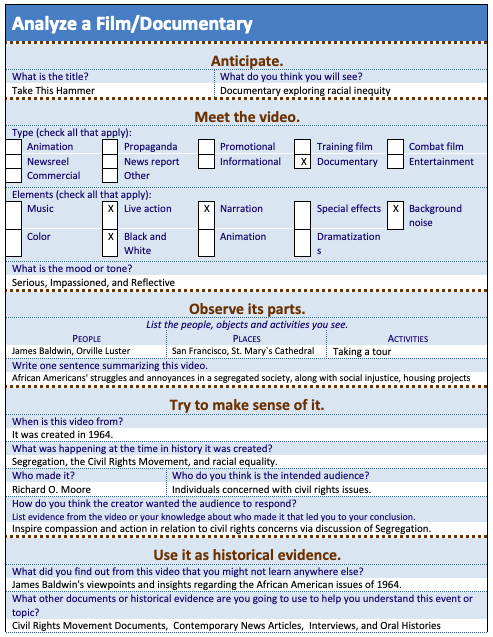Introduction
“Take This Hammer” is a moving documentary that explores the complex racial and socioeconomic fabric of San Francisco in the early 1960s. The film is a cinematic endeavor led by the astute viewpoint of renowned writer and social critic James Baldwin. It presents an unabashed examination of the various issues that the African-American community faces, particularly those who live in housing projects. The documentary shows facts of systematic racism and economic inequality, as well as the significant effects these widespread problems have on people’s lives and families.
Plot Summary
James Baldwin weaves the story as he walks around San Francisco’s streets and housing areas, conducting frank conversations with locals to conduct a wise investigation. The film deftly captures the raw and authentic aspects of African-American life, exposing the complex web of housing disparities, limited economic opportunities, and the profoundly damaging psychological effects of institutional racism (Thepostarchive). The moving and personal stories told by those directly affected by these socioeconomic problems provide the documentary with a strong sense of urgency and a persuasive argument for social change.
Characters
Baldwin’s genuine and spontaneous interactions with the locals reveal an actual picture of the diverse stories inside the African-American community. The documentary presents a patchwork of people, each adding a unique viewpoint that enhances the film’s authenticity. The documentary’s overall tone is melancholic but contemplative, deftly conveying the stress and urgency of the historical period (Thepostarchive). Baldwin’s raw conversations serve as a stimulant, drawing solid feelings out of the residents and creating an intense environment.
Themes, Storytelling and Visuals
“Take This Hammer” deftly examines several broad subjects, including social injustice, systemic racism, the effects of housing projects on families, and the challenging quest for employment. The documentary’s unfiltered dialogue, in which Baldwin converses candidly with locals, smoothly integrates the documentary’s deep thematic content (Thepostarchive). This spontaneous conversation becomes a powerful storytelling tool that enables people to express their frustrations, anxieties, and goals honestly and genuinely. The film’s conceptual resonance is strengthened by its rough, documentary-style cinematography. Visually arresting is the purposeful contrast between the beautiful cityscape of San Francisco and the brutal reality of housing developments.
Soundtrack
The soundtrack for “Take This Hammer” is intentionally simple, with intermittent music and ambient noises to heighten the emotional impact. The intentional decision to forgo a conventional musical score highlights the documentary’s dedication to putting real-life stories and unfiltered conversation first, highlighting the story’s genuineness. Amidst this melodic score, a particularly moving moment occurs when James Baldwin converses with a young man in the housing projects about the difficulties in getting work (Thepostarchive).
Memorable Scenes
The film’s remarkable capacity to personalize the hardships experienced by the African-American community is encapsulated by the young man’s heartfelt voice and Baldwin’s sympathetic response. I selected “Take This Hammer” because of the discussion of racial and social issues that San Francisco faced in the 1960s, which was conveyed through James Baldwin’s perceptive interviews and the documentary’s authentic narrative style.
Conclusion
Through James Baldwin’s perceptive perspective, “Take This Hammer” painstakingly analyzes the socioeconomic landscape of San Francisco in the 1960s. Via his unscripted chats, Baldwin highlights the pressing need for societal change by exposing the ugly truths of systematic racism and economic disparities via human narratives. The documentary purposefully chooses realism over extravagance with its somber tone, candid photography, and understated soundtrack. Ultimately, “Take This Hammer” proves to be an engaging examination that provides a significant understanding of past conflicts and contemporary demands.
Works Cited
“James Baldwin – Take This Hammer, 1964.” YouTube, uploaded by thepostarchive. 2022. Web.
